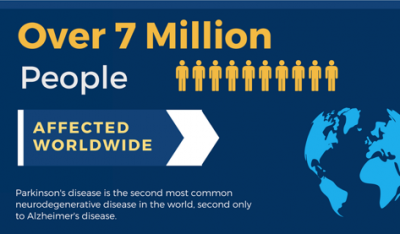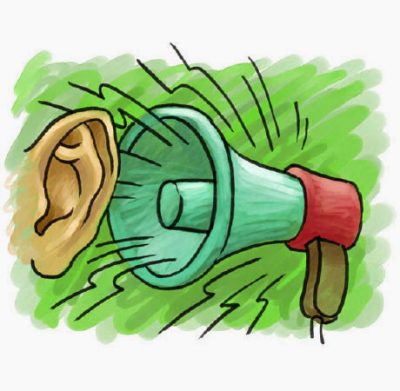 As a geriatric nurse, I rather frequently see the effects of age and disease on the body. Of course, different diseases manifest in different ways, and while some of those signs and symptoms may mirror those of old age, others may not. As a result, it is important that I, and other geriatric nurses like me, recognize how Parkinson’s disease might affect a patient under our care so that we can better care for them and meet their needs.
As a geriatric nurse, I rather frequently see the effects of age and disease on the body. Of course, different diseases manifest in different ways, and while some of those signs and symptoms may mirror those of old age, others may not. As a result, it is important that I, and other geriatric nurses like me, recognize how Parkinson’s disease might affect a patient under our care so that we can better care for them and meet their needs.
Do you know how Parkinson’s affects patients? Years ago, I went on a bicycle tour with some friends. As I was one of the strongest cycles in our group, I was responsible for towing the trailer in which we had stored most of our camping gear. It obviously made cycling more difficult, so I was working harder. Later I realized that my rear brakes had also locked up, so in addition to towing the trailer, I was also trying to ride through my brakes.
And that’s sort of what Parkinson’s patients experience. It’s a bit like trying to drive with a foot on the brake pedal. Everything is much more difficult and can be a bit herky-jerky, sluggish and uncoordinated.
Dopamine’s effect
In large part, this is because of the effect dopamine normally causes in our body and brain. Because Parkinson’s patients don’t have enough dopamine (the chemical responsible for body movement control and coordination) in their brain, they have less control over their body movements. In essence, the brain is putting the brakes on their movement, and while they can try and fight through it, they have far less control as a result of the decreased dopamine.
A chronic condition
This is exacerbated by the fact that Parkinson’s is a chronic degenerative condition, meaning it never goes away and continues to worsen as patients age. Fortunately, it is not normally diagnosed early in life; the average age of onset is 60, though some (roughly 10 percent) Parkinson’s patients may be diagnosed as early as the age of 30.
Worse, no one yet knows what causes Parkinson’s, which means there’s no cure. (In fact, diagnosis can be rather difficult, as there’s no yet agreed upon test, either.)
So about that dopamine?
The substantia nigra is a small center in the brain stem, just above the spinal cord, which is responsible for dopamine production. As we noted earlier, dopamine is the neurotransmitter responsible for balance and movement, so decreased dopamine causes problems. And for Parkinson’s patients, that’s exactly what happens: As they age, the substantia nigra degenerates, resulting in less and less dopamine production, which in turn causes diminished control of movements, including tremors and a loss of control.
Given that most experts agree that symptoms don’t present until 75 or 80 percent of the substantia nigra has already degenerated, the onset of Parkinson’s usually comes as a surprise, and then can progress rather quickly as more cells die and less dopamine is produced.
Researchers still don’t know why the substantia nigra degenerates, either, or how to stop it. At this point, the best they can do is try to artificially replicate the dopamine levels available to the body through medications that temporarily improve coordination and movement.
Parkinson’s progression
Most Parkinson’s experts use the Hoehn-Yahr scale, which breaks down patient’s disease progression into five stages. Let’s look at each stage a little more closely:
- In the first stage, symptoms are generally mild, and may only affect one side of the body. This may simply manifest as slight changes in posture, facial expression, or walking.
- In the second stage, posture and walking are more clearly affected, and on both sides of the body. Minor disability may also manifest in the second stage.
- In the third stage, symptoms are quite obvious, and balance and walking are quite affected. Even standing may be difficult, and coordination begins to require significant help.
- In the fourth stage, disability is sufficient enough that patients can no longer safely live alone. Slow, stiff movements are the norm, and walking requires assistance.
- In the fifth stage, disability is more severe, and patients can no longer walk or stand without significant assistance. As a result of heightened and severe disability, patients become completely dependent on others in this fifth and final stage, and require constant care as a result.
Given that each stage may last many years, however, patients often have time to adjust to their new normal before entering the next stage, hard as those adjustments may be—both for themselves and for their support networks of family and friends.
Parkinson’s major symptoms
While the symptoms that manifest for Parkinson’s patients may vary somewhat, in general, there are several main symptoms that affect Parkinson’s patients.
- Tremors. Tremors are most noticeable when patients are at rest and usually start with the hands or feet, though they can also affect the face. Generally, tremors occur at a consistent rate of 4-6 shakes per second and may occur on one side of the body (in stage 1) or both (in stage 2 or later). Stress and other factors may make tremors worse.
- Rigidity. Rigidity or stiffness is the result of tense, tight muscles, which can make movement difficult. It may affect arms, legs, or other muscle groups altogether. This can sometimes lead to difficulties in swallowing, eating, breathing, or talking. Additionally, facial rigidity can lead to decreased facial expression, which can also affect their ability to communicate well.
- Slowness of movement. This slowness, also known as bradykinesia, isn’t necessarily predictable in when it strikes, either, which can be doubly frustrating for Parkinson’s patients. As a result, routine things like eating, dressing, or bathing can take far longer than expected, which can add to frustrations and stress, which in turn can sometimes make other symptoms (such as tremors) worse.
- Unsteadiness. Postural instability for Parkinson’s patients is the result of both rigidity and decreased muscular control, and can result in poor posture, droopy shoulders, a lowered head, coordination issues, and accidents. Parkinson’s patients may fall easily, or may have trouble with what might otherwise seem like routine tasks; just think about trying to chop vegetables if your hand is shaking and you don’t have very good control of your arm, for instance. This, too, can be an incredibly frustrating part of daily life for Parkinson’s patients.
Takeaway points for better care
I want to leave you with a few key points I’ve picked up that have helped me be a better nurse to my Parkinson’s patients:
- Parkinson’s will eventually affect every part of the mind and body, and as a result, it’s incredibly important that you are clear with Parkinson’s patients. Don’t tell them it will get better, because they also know that’s not the way the disease works.
- There is no cure for Parkinson’s. The best you can hope for is treatment that helps them manage their symptoms. Kindness and patience go a long way.
- It’s also important that you help Parkinson’s patients preserve their bits of independence as best you can for as long as you can. Even if it seems like it is taking them forever or is difficult for them, allowing them to still complete simple tasks on their own is still better than doing those tasks for them. These are adults for whom a disease is returning them to childhood, so be patient and kind with them.
- Don’t ever take their anxieties, anger, or frustration personal. Remember how hard this must be for them, and remember, kindness and patience go a long way, especially as stress can exacerbate their symptoms.
- Watch for mental health warning signs. Anxiety, depression, and withdrawal are all incredibly common for Parkinson’s patients, who can watch their abilities slip away from them regularly. It’s important that you keep an eye on their mental health as well as you treat them, and report warning signs as you see them, so they can get the appropriate mental health care.
Parkinson’s is a debilitating disease or can be, and good healthcare can go a long way. As a geriatric nurse, I’ve seen that all too well in my own caregiving.

Multiple Sclerosis – An infographic by GeriatricNursing.org
Rebecca Evans is a geriatric nurse who is consistently surprised by how much age can be far more of a mindset than a number. She believes that access to the right information can improve a patient’s care, as they are better able to advocate for themselves. More information can be accessed at geriatricnursing.org.
AGE-u-cate Training Institute develops and delivers aging and dementia training for professional and family caregivers. We welcome guest bloggers who have valuable information to share with others. Please contact us at info@ageucate.com
 Faith-based hospital organizations recognize the impact of partnerships with their local faith-based communities. The important role of faith community nursing programs is to bridge the gap in helping congregational nurses to meet the needs of their faith communities.
Faith-based hospital organizations recognize the impact of partnerships with their local faith-based communities. The important role of faith community nursing programs is to bridge the gap in helping congregational nurses to meet the needs of their faith communities. I recently attended a conference and listened to a geriatrician share that the average number of medications her patients are on when they come to her practice is a shocking 18 – 24. That’s per DAY! No doubt we have a serious epidemic in this country – our seniors are drowning in drugs.
I recently attended a conference and listened to a geriatrician share that the average number of medications her patients are on when they come to her practice is a shocking 18 – 24. That’s per DAY! No doubt we have a serious epidemic in this country – our seniors are drowning in drugs. As a geriatric nurse, I rather frequently see the effects of age and disease on the body. Of course, different diseases manifest in different ways, and while some of those signs and symptoms may mirror those of old age, others may not. As a result, it is important that I, and other geriatric nurses like me, recognize how
As a geriatric nurse, I rather frequently see the effects of age and disease on the body. Of course, different diseases manifest in different ways, and while some of those signs and symptoms may mirror those of old age, others may not. As a result, it is important that I, and other geriatric nurses like me, recognize how 
